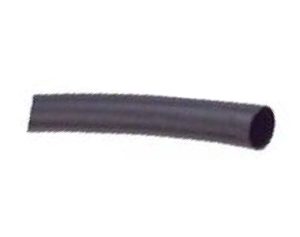
Heat shrink tubing offers a simple and effective way to protect wires from damage. Also known as heat shrink, it consists of plastic tubing material. Rather than leaving wires exposed, you can run them through the hollow center of heat shrink tubing. The heat shrink tubing will provide a physical barrier that protects the wire from damage. Here are six facts about heat shrink tubing.
#1) Available in Different Materials
Not all heat shrink tubing is made of the same material. There are many different types of heat shrink tubing, each of which has unique characteristics. One of the most common types is polyolefin. Polyolefin heat shrink tubing is strong, flexible and long-lasting. Other common materials in which heat shrink tubing is made include silicone rubber, PVC, PVDF and FEP.
#2) Invented in the 1960s
Heat shrink tubing was originally invented in the early 1960s. It was pioneered by the commercial chemicals company Raychem Corporation. Raychem Corporation was known for producing both heat shrink tubing and aircraft cable. Today, companies throughout the world produce and sell heat shrink tubing.
#3) Requires About 200 Degrees Fahrenheit
As the name suggests, heat shrink tubing requires heat to install. It’s designed to shrink when exposed to heat, at which point the heat shrink tubing will protect the wire within it. How much heat does it require exactly? Most varieties of heat shrink tubing require about 200 degrees Fahrenheit.
#4) Shrink Ratios
When exposed to heat, heat shrink tubing will contract or shrink. The amount of shrinkage, however, will vary depending on the shrink ratio. Some types of heat shrink tubing have a shrink ratio of 2:1, whereas others have a shrink ratio of 3:1 or 4:1. A shrink ratio of 2:1 means the tubing will shrink to half its size when exposed to heat.
#5) Longitudinal Shrinkage
Heat shrink tubing doesn’t just shrink to a smaller diameter when exposed to heat; it also becomes shorter. This is known as longitudinal shrinkage. Heat causes the tubing to shrink to a shorter length. Longitudinal shrinkage may range from 5% to 10%. Therefore, if you’re planning to use heat shrink tubing, you’ll need to ensure it’s long enough to account for longitudinal shrinkage. Only polyolefin heat shrink tubing doesn’t suffer from longitudinal shrinkage.
#6) Protects Wires From Environmental Contaminants
Heat shrink tubing protects wires from environmental contaminants. Dust and moisture, for instance, can take a toll on exposed wires. It can degrade the wires while increasing the risk of premature failure. With heat shrink tubing, though, wires are protected from environmental contaminants such as this.
- SEO Powered Content & PR Distribution. Get Amplified Today.
- PlatoData.Network Vertical Generative Ai. Empower Yourself. Access Here.
- PlatoAiStream. Web3 Intelligence. Knowledge Amplified. Access Here.
- PlatoESG. Carbon, CleanTech, Energy, Environment, Solar, Waste Management. Access Here.
- PlatoHealth. Biotech and Clinical Trials Intelligence. Access Here.
- Source: https://monroeaerospace.com/blog/6-facts-about-heat-shrink-tubing/



